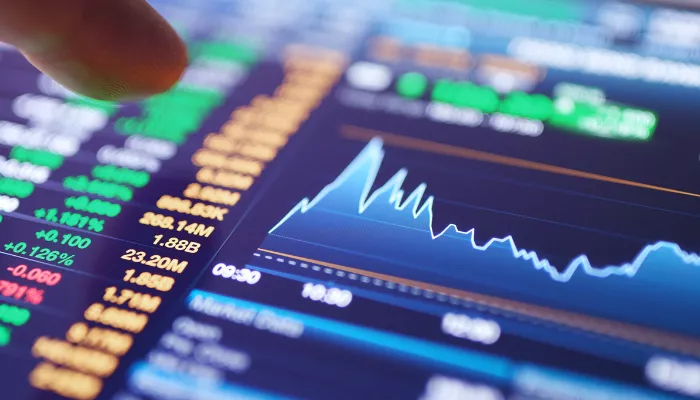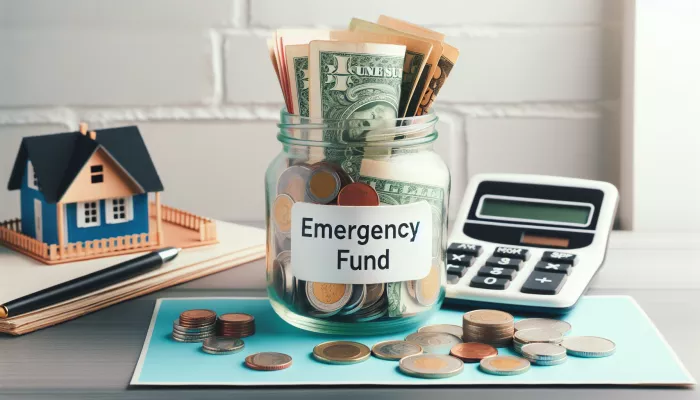

Emergency reserve It is an essential savings that you build up in order to cover unexpected expenses or periods of lack of income, such as in cases of illness or job loss.
Think of it as a financial safety net that can protect you from unwanted debt and stress during tough times.
This fund must be made up of enough money to cover three to six months of fixed expenses.
Fixed expenses are those essential for maintaining your day-to-day life, such as:
An emergency fund offers financial peace of mindKnowing that you have a fund to fall back on, you can make life and work decisions with less pressure.
Without it, any unforeseen event can result in debt, which can lead to a vicious cycle that is difficult to break.
Furthermore, with this fund, you can avoid using high-interest loans, such as credit cards or overdrafts, which can further compromise your financial health.
Your emergency fund should be easily accessible, but also secure. Opt for low risk investments and immediate liquidity, such as savings, CDB with daily liquidity or DI Funds.
Avoid investing this money in stocks or other volatile investments, as the market value can fluctuate greatly, making it difficult for you to withdraw the full amount when you really need it.
Calculating the ideal size of your emergency fund is essential to ensuring financial peace of mind in times of uncertainty.
This step-by-step guide will help you better understand your needs and plan accordingly.
To start, it’s crucial to know how much you spend each month. Include everything from essential bills like rent and utilities to variable expenses like food and entertainment.
This detailed analysis is the starting point for understanding the minimum needed to cover your monthly expenses. without additional income.
Next, decide how long you would like your emergency fund to cover your expenses.
Financial experts generally recommend a period of 3 to 6 months, but this may vary depending on the stability of your job and your comfort level.
Consider factors such as the stability of your industry and how quickly you believe you could find another job if necessary.
With your monthly expenses in hand and a coverage period in mind, calculate: Monthly Expense x Months of Coverage = Emergency Fund.
For example, if your monthly expenses are R$2,000 and you decide on a coverage period of 6 months, then you should aim for an emergency fund of R$12,000.
An emergency fund should be robust enough to cover unexpected expenses as well.
It could be the loss of a job, an unexpected medical expense, or even urgent home repairs..
Evaluate historical unexpected expenses to add an additional margin of safety to your budget.
If the final calculation seems daunting, remember that the important thing is to get started.
Even if you are unable to achieve the ideal value initially, start saving now and set achievable goals to increase your savings will make a big difference in the long run.
Building an emergency fund is an ongoing process. Review your emergency fund at least once a year or whenever there is a significant change in your financial life.
This will ensure that your booking continues to meet your needs.
Building an emergency fund is essential for your financial peace of mind. Here are some practical strategies to get you started on this journey:
Define how much you need to save and how long you intend to reach that amount. This provides a guide for your actions.
Analyze with pay attention to your consumption habits can reveal opportunities to cut unnecessary expenses and direct more money into your reserve.
Set up automatic transfers to your reserve account. Treat savings as a recurring expense facilitates the construction of the habit of saving.
Start with small values, adaptable to your budget, and increase these values gradually. This makes the process less intimidating and more manageable.
Use extra income, such as bonuses from work or tax refunds, to boost your emergency fund. These contributions can help you reach your goal faster.
Useful links:
Consider a savings group with friends or family can create a network of support and mutual encouragement, making the process more enjoyable and effective.
Remember, the important thing is to take the first step and keep progressing.
With determination and the right strategies, reaching your emergency fund will become not just a possibility, but a reality.